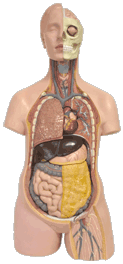At WiseGEEK, we're committed to delivering accurate, trustworthy information. Our expert-authored content is rigorously fact-checked and sourced from credible authorities. Discover how we uphold the highest standards in providing you with reliable knowledge.
What Are the Different Types of Lipids?
Lipids refers to a large class of organic chemical compounds that has been sometimes described as the third food group after proteins and carbohydrates. They are popularly associated with fats, but there are many other types of lipids. With an overwhelming variety to be found in nature, biochemists have been unable to agree on a system of categorizing them. In 2005, an international group of academics proposed eight classifications based in part on a lipid’s molecular form but also on the chemical’s apparent natural function.
The fatty acids are the simplest and most basic lipids. Some of their signature characteristics are shared in common to a degree in most all other types of lipids. Their “backbone” is a long, straight chain of carbon and hydrogen atoms, usually an even number from 4 to 48. One end of the chain is said to be hydrophobic, as fats are insoluble and cannot break apart and dissolve in water.

Oleic acid is one of the dominant fatty acids in olive oil and other plant-derived cooking oils. These types of lipids are also the most abundant in human fat tissue. Muscle tissue relies on them a storage medium of fuel. Some chemists have argued that more complex lipids can be construed as either derivatives of fatty acids or mimics of their basic functional characteristics.
Glycerolipids are a more potent fuel store, with its backbone attached to one or more oxygen and hydrogen atoms. Triglycerides, with three such hydroxyl pairs, are also abundant in the human body. The additional attachment of a grouping of various chemicals connected to a phosphorus atom creates phospholipids. While one end of the chain remains repellent to water, the other end is said to attract water, or to be hydrophilic. Phospholipids are the key ingredients to the selective semi-permeability of all living cell membranes, the barrier’s ability to retain water yet allow other substances to pass through.
Fatty acids that attach to a complex organic compound called sphingosine are classified as sphingolipids. They also are primarily found in cell membranes, and are believed to play a role in identifying and communicating with other cells. Saccharolipids have a simple sugar, such as glucose, attached. Prenol is a natural alcohol found in citrus fruits and other food. Vitamin E and vitamin K are examples of prenol lipids.
Sterol lipids are a group of fatty acids attached to sterols, or steroid alcohols. They, too, are said to be amphiphilic — both repelling and attracting water — and an important structural component of cell membranes. Cholesterol is the best known example. There are some types of lipids extracted from animal or plant sources with significant medicinal value to humans. One productive category is the polyketides, secondary compounds derived from metabolizing and changing the molecular structure of primary lipids.
AS FEATURED ON:
AS FEATURED ON:










Discussion Comments
Where are lipids found other than in food or cells which can be used for a standard test?
Post your comments